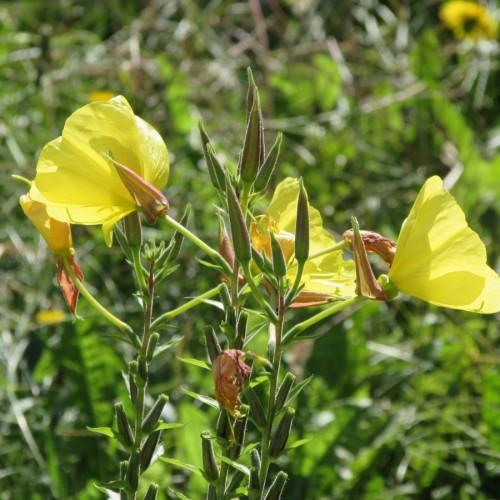
evening primrose
Oenothera pilosella
Cycle:
Herbaceous Perennial
Watering:
Frequent
Hardiness Zone:
3 - 8
Flowers:
Flowers
Sun:
Full sun
Leaf:
Yes
Growth Rate:
Low
Maintenance:
Low
Drought Tolerant:
Yes
Care Level:
Medium
watering
Water evening primrose (Oenothera pilosella) frequently to keep the soil evenly moist. When the soil begins to dry out, water deeply until moisture begins to run through the drain holes in the bottom of the pot. Aim to water evening primrose once or twice a week, depending on soil type and local conditions. If the soil dries out within a few days, increase watering frequency to every other day. Avoid getting the leaves wet, as this can encourage fungal diseases. During hot summer months, evening primrose may even need to be watered daily.
sunlight
Evening primrose (Oenothera pilosella) needs between 4-6 hours of direct sunlight each day. It is best to place the plant in an area that gets a full sun around midday, and the sunlight should be evenly distributed through the day for best results. While the plant will tolerate partial shade, it is not able to thrive when placed in a shady area as it needs full sun to produce abundant flowers and maintain healthy growth.
pruning
For evening primrose (Oenothera pilosella), the best time to prune the plants is early in spring. Pruning should be done only when necessary, usually when the plants become too large or become overgrown. A light pruning will help keep the plant tidy and encourage it to flower. Pruning should be done to remove any dead, diseased, or damaged stems, and any overly long or unruly stems. It should be done with a sharp, clean pair of scissors, or pruning shears. Prune away any old or spent flowers, and stems that are producing few or no flowers. The amount of pruning that needs to be done will depend on the size and condition of the plant, but try to cut only what’s necessary. Too extreme or aggressive pruning can be damaging to the plant and cause the plant to become stunted and weak.
